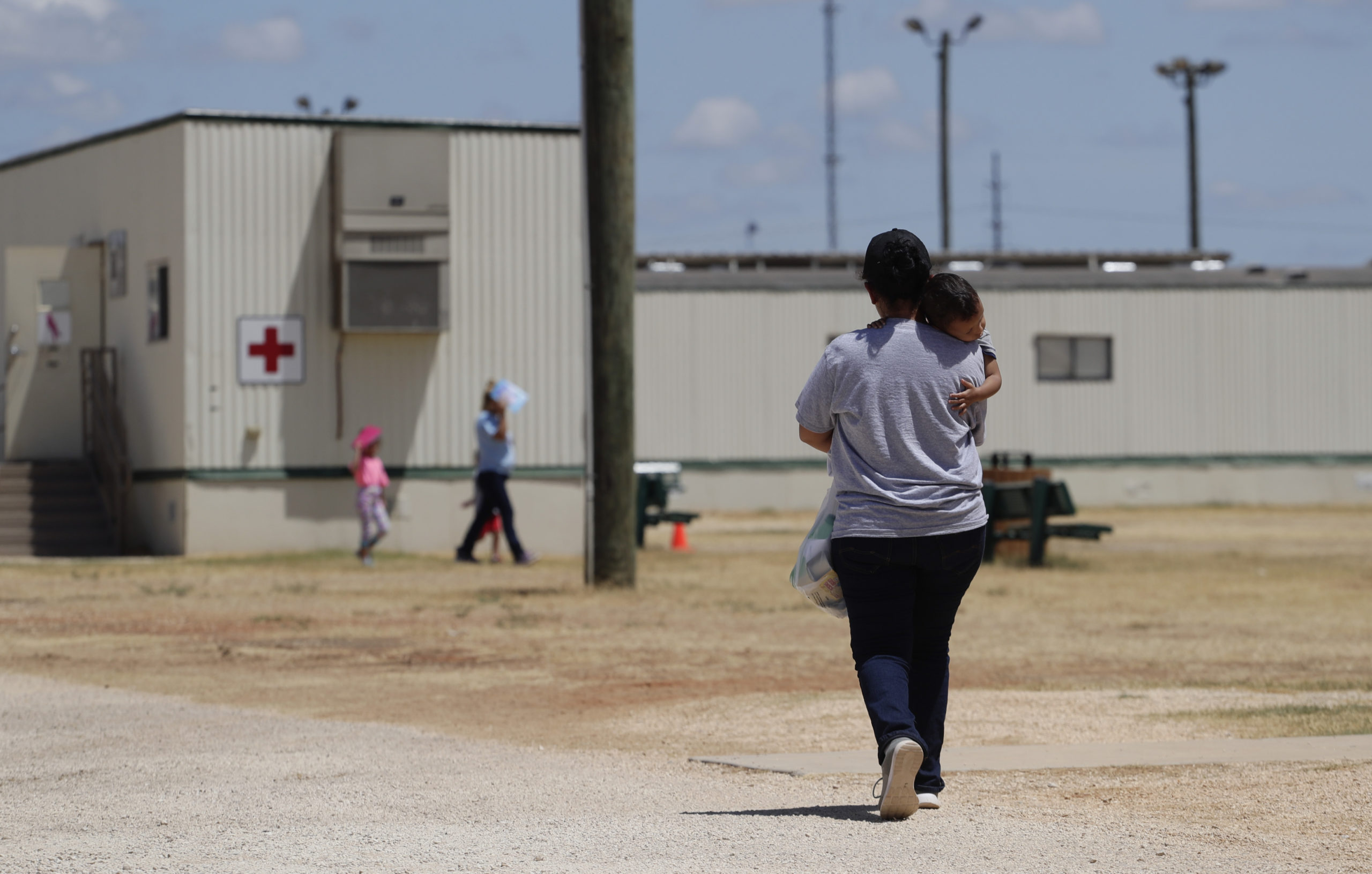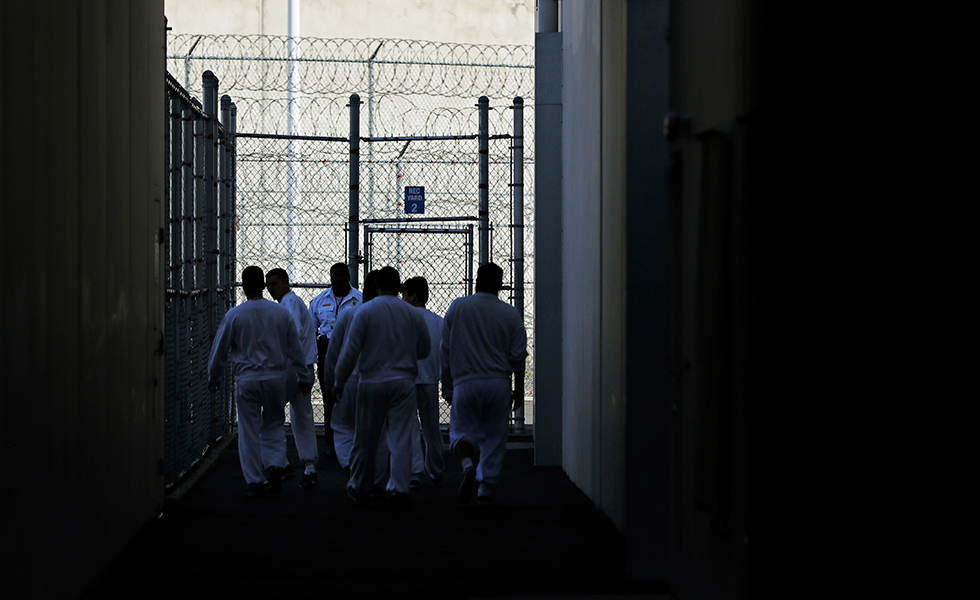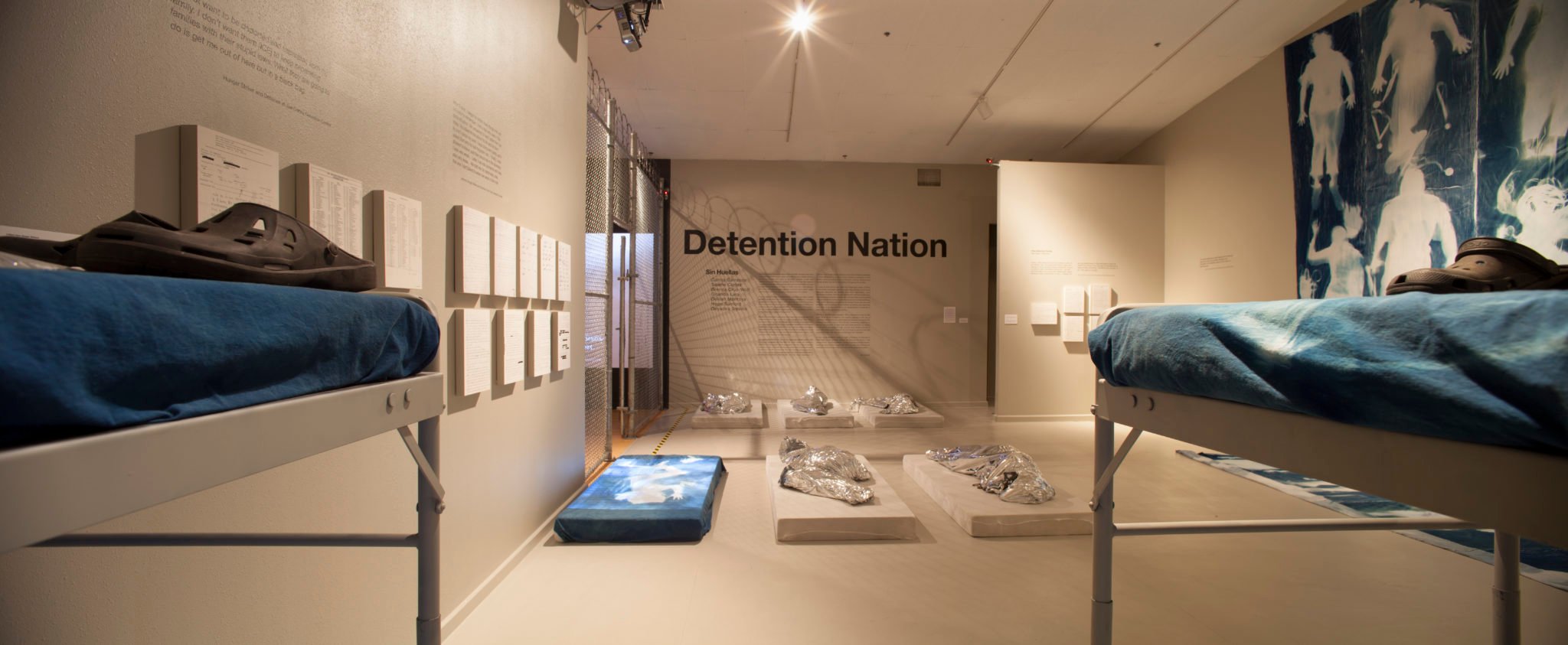
Lives in Limbo
How activism, art and architecture are bringing the shadowy immigrant detention system into clearer view
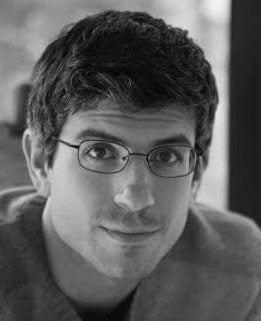
Lives in Limbo
How activism, art and architecture are bringing the shadowy immigrant detention system into clearer view
They hide in the liminal spaces of our cities, near airports or far out in exurban fields. Like many of the undocumented immigrants they warehouse, they strive to fly under the radar and make a little money in the shadows — though their remittances are sent not to family in Mexico or Central America, but to corporate shareholders. They may be invisible, but they’re a hallmark of 21st-century American life, a purgatorial archipelago that runs through dozens of cities and towns, many of them in Texas, describing the outer edge of American guarantees of civil and human rights to people on our soil. They are our immigrant detention centers: de facto prisons, many of them privately owned, reserved specifically for those who have committed no crime besides existing in the United States without the proper documents.
Few besides the detained have ever seen the inside of one. Even researchers who set out to learn about the design of these buildings are likely to find themselves rebuffed. “Studying the architecture of detention is hard,” says Sarah Lopez, a professor in the University of Texas at Austin School of Architecture. “Unless you’re incarcerated or detained, or a warden or a food provider or medical assistant, basically, they don’t want you there.”
Lopez is the force behind the Texas incarnation of “States of Incarceration,” a traveling multimedia exhibition that set up shop at UT-Austin in October. For the project, Lopez and her graduate students mapped the locations of detention centers throughout the state and used Google Earth to create silhouettes of each building’s footprint. The researchers even gained hard-won access to one county-run detention center and built a 3-D model from sketches. Their work marks an important step forward in understanding the physical reality of a clandestine and growing carceral system that prefers to exist just out of reach of the American imagination.
“These are public institutions. And it’s immigration — a national issue. But it’s not something that we’re having the kind of access to, even just finding out how it’s running and how it’s working, that we should.”
Lopez, who provided email correspondence with U.S. Immigrations and Customs Enforcement (ICE), has submitted two Freedom of Information Act (FOIA) requests to learn about the architectural history of Texas detention centers. Her first FOIA request, for architectural plans and/or schematic drawings, was returned by ICE with a note stating that “no records responsive to your request were found.” Her second FOIA request, for records of building agreements with contractors including the private-prison firm GEO Group, was still pending at press time — more than four months since she’d submitted the request. Lopez has also been unsuccessful in her attempts to arrange tours of several Texas ICE facilities. Meanwhile, one detention center planning firm Lopez was able to identify, Arkansas-based Argenta Architecture, did not respond to emails, phone calls or even official communication sent on university letterhead.
“These are public institutions,” Lopez says. “It’s taxpayer money. And it’s immigration — a national issue. But it’s not something that we’re having the kind of access to, even just finding out how it’s running and how it’s working, that we should.”
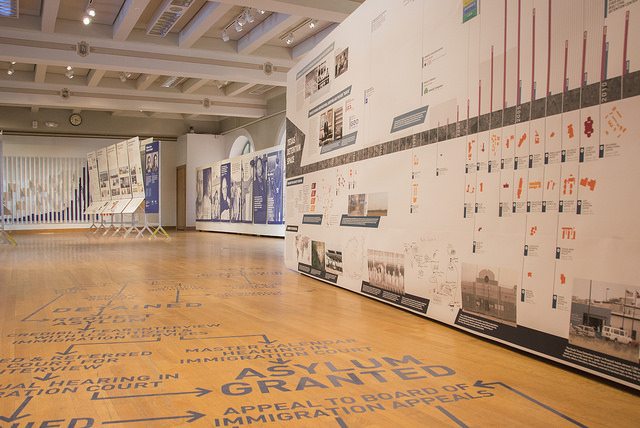
“States of Incarceration” tracks the massive growth of ICE’s detention footprint in Texas over the past two decades, with one or more facilities newly dedicated to warehousing undocumented immigrants every year from 2001-14. The advocacy group Human Rights First recently noted that immigrant detention is at an all-time high nationwide, with more than 42,000 people now in the custody of ICE. With President-elect Trump, the first-ever Oval Office candidate to be endorsed by the ICE officers’ union, now promising to vastly expand the scope of immigration enforcement, the timing could not be more ripe for a public reckoning with the realities of these detention centers.
Unfortunately, public consciousness is only very slowly catching up in terms of what these places look like, how they function, who is locked inside and what the inmate experience feels like. With cameras barred and tours out of the question, the gallery space has become a vital frontier for sharing not only facts about this shadowy carceral system, but also sensory impressions, stories and experiences: the stuff of art. “States of Incarceration” is one important step forward in addressing this gap in empathy and understanding. Another major example is “Detention Nation,” which opened at the Station Museum in Houston in January 2015.
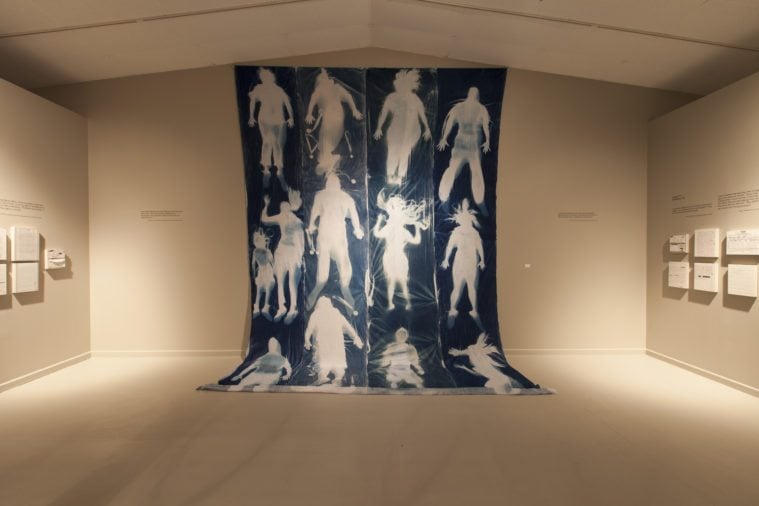
Several members of Sin Huellas, the art and activism collective behind “Detention Nation,” are directly affected by immigration enforcement, including a few who spent time in detention centers. Members shared their knowledge of life on the inside to help the group impressionistically re-create a detention center space in the gallery. But “Detention Nation” didn’t receive much coverage at the time of the exhibition. “The press was unmoved by it,” says University of Houston professor and Sin Huellas co-founder Delilah Montoya. “They could care less. But that’s Texas.”
It was a missed opportunity, and one worth correcting now, with “States of Incarceration” pushing detention center issues into the spotlight again. While Lopez’s UT-Austin exhibit aims for academic rigor, the members of Sin Huellas take a right-brained approach to social justice, mixing art with activism to a degree rarely seen in either sphere. “Detention Nation” remains perhaps the best reference available, in any medium besides pure text, for how immigrant detention centers look and feel.
Texas publications such as this one have a halfway-decent excuse for not digging too deeply into the story of Sin Huellas when “Detention Nation” went up last year: The collective has generally chosen to maintain at least a veneer of anonymity. But send an email to the address on the group’s Facebook page and you get a reply from a thoughtful, soft-spoken young man named Orlando Lara, who is more than willing to share Sin Huellas’ story.
Lara agrees to meet at a café in Montrose, bringing along fellow collective member Deyadira Arrellano and the couple’s infant daughter. Raised first in the Gulfton area of southwest Houston, then in suburban Spring, Lara left Texas briefly to study at Stanford and earn a Master of Fine Arts in writing from Cornell — but his roots in the Houston activist community run deep. When Montoya was approached by the Station Museum in late 2014 with an offer of exhibit space for a project on immigration justice, she knew Lara would have a direct line to the local immigrant rights community.
Lara had recently supported a hunger strike at Joe Corley Detention Facility in Conroe and wanted to make something that reflected the picture he’d been piecing together of conditions there. “I’d just spent a lot of time working on these cases with men who had been detained, and a lot of that experience is talking to them on a very poor phone line connection … or going to a detention center and seeing them across the glass — all these confined, very limited ways of being able to communicate with them,” Lara says. “For me personally, my imagination was taking me inside. I wanted to be able to see it.”
Together, Montoya and Lara set about forming a collective that would include not only a mix of artists and activists, but also people directly affected by immigration enforcement. Montoya brought in Carlos Carrasco, a DREAMer (a term claimed by undocumented youth who came to the United States at an early age), and Brenda Cruz-Wolf, both photographers and videographers. Lara invited Arrellano and Hope Sanford, two mainstays of the immigration justice community in Houston. Both also have strong creative sides, Lara stresses; no one in the collective took on a purely activist or purely artistic role. Likewise, the collective members who had experienced detention — Selene C., Israel Torres and Douglas Menjivar — not only contributed their firsthand knowledge but also helped shape the project.
“As an organizer, you’re trying to walk without leaving footprints. You’re trying to facilitate a role where you’re empowering others. In that sense, you’re trying to work without leaving a trace, just like they’re trying to cross the border without leaving a trace.”
The group took its name, Sin Huellas, from a gruesome practice among some undocumented immigrants of burning fingertips with flame or acid so that no fingerprints remain. This trick can help an immigrant if he or she is picked up by police or ICE; authorities will not be able to match the suspect with a previous arrest, detention or deportation record. The name conjures the ghost-like existence of undocumented people under the current enforcement regime; it also hints at the brutality both directly inflicted by and secondary to the enforcement state. But for Lara and his fellow collective members, the phrase took on additional meanings.
“The direct translation would be Without Fingerprints, but our translation was Without a Trace,” says Arrellano. “Meaning that we were building, we were recording something, but we were not leaving our mark, because it’s not our mark to leave. So we’re in solidarity with others. We’re not speaking for others, we’re not branding it. … It’s very much a collective.”
Lara agrees, but he adds, “There’s a little tension with that. That’s the ideal for organizing. But for me, there’s a little bit of a conflict between the role of the artist and the activist. As an organizer, you’re trying to walk without leaving footprints. You’re trying to facilitate a role where you’re empowering others. In that sense, you’re trying to work without leaving a trace, just like they’re trying to cross the border without leaving a trace.
“But as an artist, obviously your role is to express something,” he continues. “You’re not being quiet. … So to me, ‘Sin Huellas’ was kind of a play on that. How do you achieve this impossible goal?”
Lara acknowledges a range of temperaments among collective members along the spectrum from artist to activist, but he resists the idea of classifying and separating their roles. He recalls, in college, working with a longtime member of El Teatro Campesino, a political theater company formed as a cultural wing of the United Farm Workers in the era of César Chávez. “They had a rule that there was no such thing as someone that was just an artist,” Lara explains. “Everyone at some point had to do some organizing, so that there weren’t these special categories created that were like, ‘You just worry about painting a mural.’”
The thorough mixing of activist and artist roles comes through in the installation, which conveys the sensory texture of life inside a detention center through video, sound design and sculpture. Sin Huellas members drew on the Joe Corley center, a privately owned facility that, if kept at capacity, can earn its owner, the GEO Group, $87 million per year in government contracts. The men inside, many of whom are asylum-seekers awaiting processing, are packed into large dormitories with little privacy or separation of bathroom and eating areas. In 2014, more than 200 men initiated a hunger strike that lasted two weeks and ended in mass deportations and a federal investigation. Lara, Arrellano and other collective members were involved in supporting the hunger strikers from the outside, and many of the letters and videos included in “Detention Nation” include complaints that formed the basis of the strike:
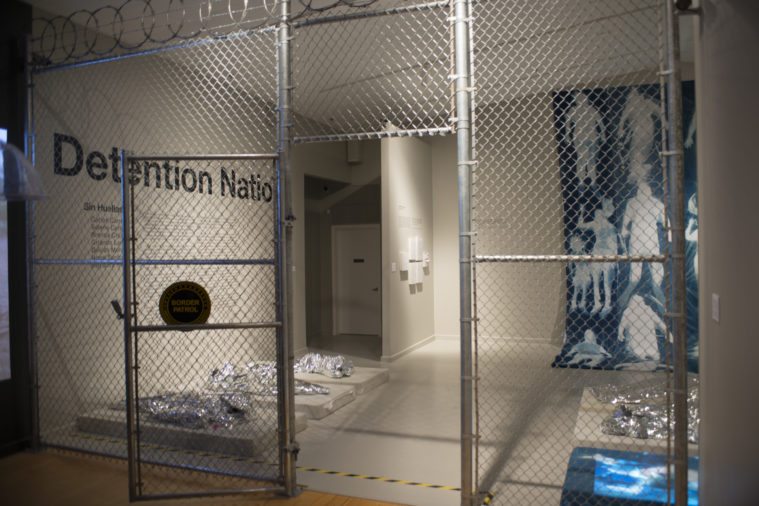
“We are not allowed to see the sunlight ever.”
“Flu comes and goes every month … The exhaust doesn’t work; they also come and spray bleach on the walls at 3am because the walls are covered with mold.”
“When you go to the nurse, the medicine you get is ‘DRINK WATER, DRINK WATER,’ because they never have any medicine…”
Beyond letters posted around the installation, “Detention Nation” is full of sounds, sights and textures. Hollow, clanking noises echo through the walls. A stainless-steel toilet stands wedged between two bunk beds. At the center of the room are wraith-like sculptures of sleeping bodies wrapped in Mylar blankets, resembling extraterrestrials out of some sci-fi horror film more than undocumented immigrants from across the border.
In addition to raising awareness of the harsh realities of immigrant detention, Lara and his collaborators had another, more tangible goal in mounting “Detention Nation”: winning release for one of their collective members, Menjivar, who had suffered abuse while in detention. “I don’t understand this country,” Menjivar wrote from Joe Corley in a letter displayed as part of the exhibition. “Why do they have the Statue of Liberty if they don’t believe in her? They have innocent people detained. It’d be better if they got rid of it.”
As this article was reported, Menjivar was free and working in Houston. Lara credits this both to Sanford, who worked to convince the FBI to launch an investigation into his case, and to the Station Museum, which wrote letters on his behalf during the exhibition. “I think [ICE] decided, it’s better for us not to have him,” Lara says. “And that’s really the only way we can win.”
Menjivar did not make himself available for an interview, but consented, through Lara, to share his name and some personal details. His own journey dovetails with that of another group that used “Detention Nation” as a platform for activism. During their run at the Station Museum, Sin Huellas hosted Caravana 43, a group led by relatives of the 43 students who were kidnapped and disappeared in Guerrero, Mexico, in 2014. Arrellano hopes that the collaboration shows how the issues the two groups work with intersect.
“They are a group that’s trying to address the root causes of why people are being displaced,” Arrellano explains. “Douglas [Menjivar] was also a person that, within his home country, was trying to shed light on the narco-trafficking and corrupt government. He is a person like the parents of the 43, and the students, who were trying to improve their own country, but by doing that were targeted.” If deported back to El Salvador, Arrellano implies, Menjivar’s life would be in grave danger. In that sense, “Detention Nation” may have literally helped save a life.
At the same time, Menjivar helped keep the collective focused on the scale and brutality of their chosen subject matter, and on the humility required of anyone who dreams of making a difference through art. When Sin Huellas brought the exhibition to the Museo de las Americas in Denver in February 2016, Menjivar was asked to speak to the swanky, wine-swilling opening-night crowd.
“His perspective was very important in that moment,” Arrellano says. “When it came time to speak, he addressed that. He said: ‘This is not a time to have fun. I want you to know that something tragic happened to me. And this is very real. This is a time to reflect and really think about how we are being treated in the United States.’”
Lara admits that he felt Menjivar’s words were directed at him as much as at the gala attendees. “At an opening as an artist, you’ve worked really hard, and you’re happy that you’re finally done,” he says. “Then you have someone who went through this, and it’s kind of a reality check that this isn’t the end of the story. This is just the beginning.”
As for where Sin Huellas goes next, Lara guesses that the group will eventually fade away as an art-making concern. “It mirrors our organizing style, which is not to focus on creating these sorts of units that persist forever,” he says. “It has an ephemeral quality to it.”
At the same time, he says that the group is hoping to reinstall the exhibition in additional cities. The experience, however, has not entirely sold him on the gallery as a space for effective activism. Lara says he sees more and more Houston artists involved in organizing, but he worries that “artivism” is a trend that will run its course. He wonders if his efforts wouldn’t prove more effective if, instead of bringing experienced organizers into an art-making space, he instead focused on the opposite — bringing accomplished artists to bear on discrete organizing tasks.
“When you’re organizing, it’s so fast-paced, you don’t feel like you have time to develop a really attractive video or a really attractive public intervention,” he says. “I would like to do some more of that.”
Lara also notes that his focus has shifted toward his own story, which has become more and more relevant to the broader issues he’s been organizing around for the past several years. Toward the end of our interview, he reveals that he himself was recently asked by the U.S. Department of State to prove his citizenship. He was born to a midwife in South Texas, he says, and, as he understands it, the department has been compiling lists of midwives who may have accepted payment to falsely report people as born in the United States.
Arrellano notes that she and others have noticed a pattern of documented activists being targeted by immigration authorities, to the point where she feels compelled to warn others interested in following her path. “We don’t want to frame it as ‘Don’t get involved,’ because we’d be buying into the fear,” she says. “We want to very much stand in solidarity with people and let them know that they can do this. But at the same time, we can’t help but see that it has happened.”
For this reason, it’s vitally important that the torch of immigrant detention critique and investigation has been picked up by institutionally protected actors such as the academics behind “States of Incarceration.” Lopez notes proudly that her class’ contribution to the UT-Austin exhibition also included testimony of asylum-seekers fresh out of detention. As part of the project, a public event in UT’s Mebane Gallery brought together formerly incarcerated and formerly detained panelists, along with a family member of a man who had been detained and deported, to share personal stories with the campus community and beyond.
As the immigrant detention behemoth becomes more deeply entwined in the fabric of Texas, these stories are beginning to become more familiar to audiences. With that comes the opportunity to demand transparency and accountability, especially in the face of Trump’s push for a draconian immigration crackdown.
“By getting so many people involved in this project, my hope is that it creates a sort of public consensus and public memory of what the stakes of detention are,” Lopez says, a sentiment that would likely be echoed by the members of Sin Huellas. “The work we put into this in order to get to the point where we could have a conversation about ‘How did we get here?’ is done in the hopes that we can now start to have the conversation about ‘Where do we go from here?’”
